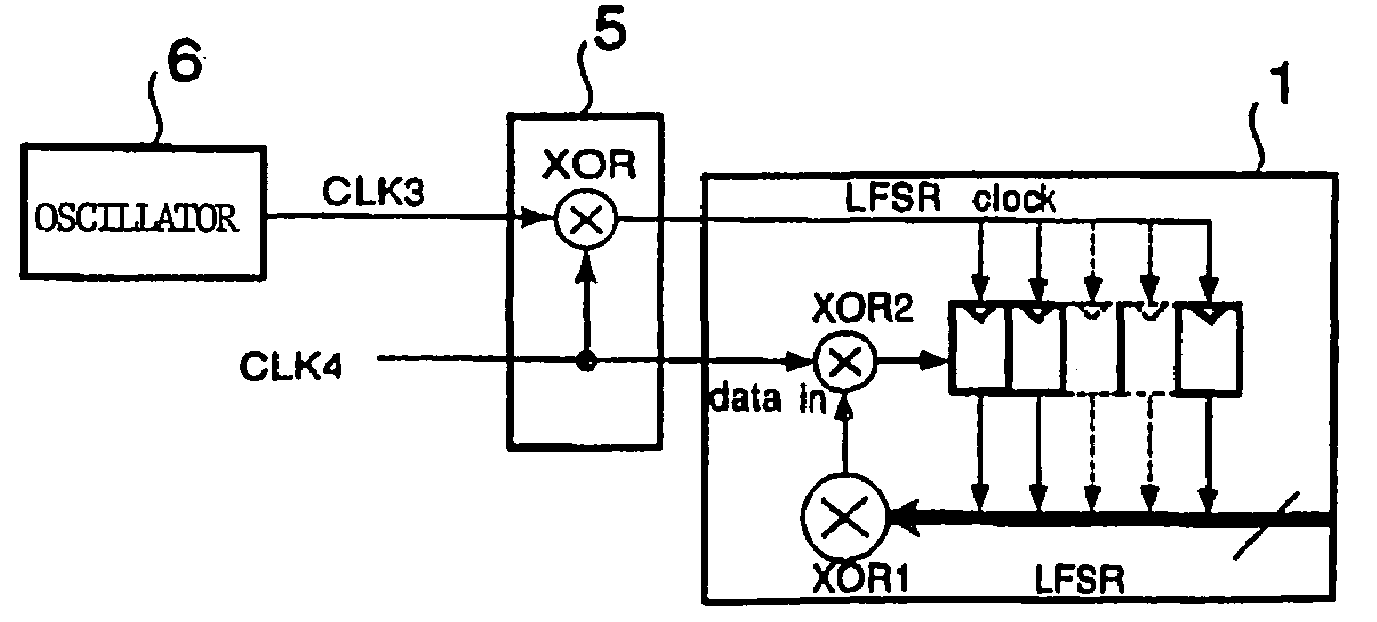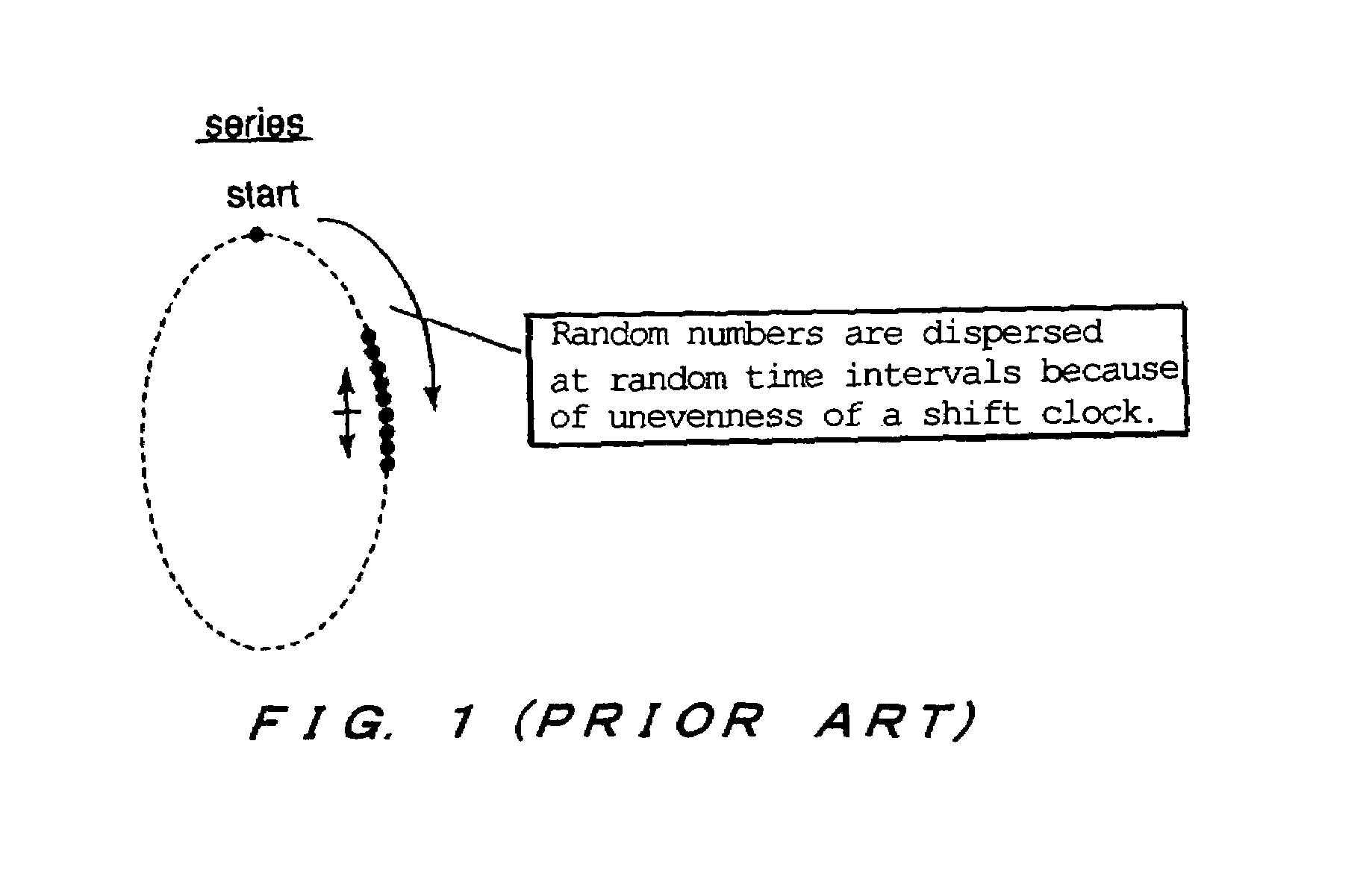Pseudo-random number generator
- Summary
- Abstract
- Description
- Claims
- Application Information
AI Technical Summary
Benefits of technology
Problems solved by technology
Method used
Image
Examples
Embodiment Construction
[0028]As illustrated in FIG. 2, a pseudo-random number generator according to the present invention comprises LFSR 1; signal generator 2 for generating a shift clock (LFSR clock) for operating LFSR 1 and predetermined input data (data in); access controller 3 for controlling a read of random numbers generated by LFSR 1; and write circuit 4 for writing data supplied from the outside into each register of LFSR 1. In addition, the pseudo-random number generator according to the present invention comprises Pre-SEED circuit 5 for generating Pre-SEED which is relied on to define an initial value (SEED) of LFSR 1 in a reset time immediately after power-on, as illustrated in FIG. 3.
[0029]FIGS. 2 and 3 illustrate the configuration of the pseudo-random number generator according to the present invention in two parts for facilitating the explanation of its operation, later described, wherein FIG. 2 illustrates the configuration associated with a normal operation, and FIG. 3 illustrates the con...
PUM
 Login to View More
Login to View More Abstract
Description
Claims
Application Information
 Login to View More
Login to View More - R&D
- Intellectual Property
- Life Sciences
- Materials
- Tech Scout
- Unparalleled Data Quality
- Higher Quality Content
- 60% Fewer Hallucinations
Browse by: Latest US Patents, China's latest patents, Technical Efficacy Thesaurus, Application Domain, Technology Topic, Popular Technical Reports.
© 2025 PatSnap. All rights reserved.Legal|Privacy policy|Modern Slavery Act Transparency Statement|Sitemap|About US| Contact US: help@patsnap.com



